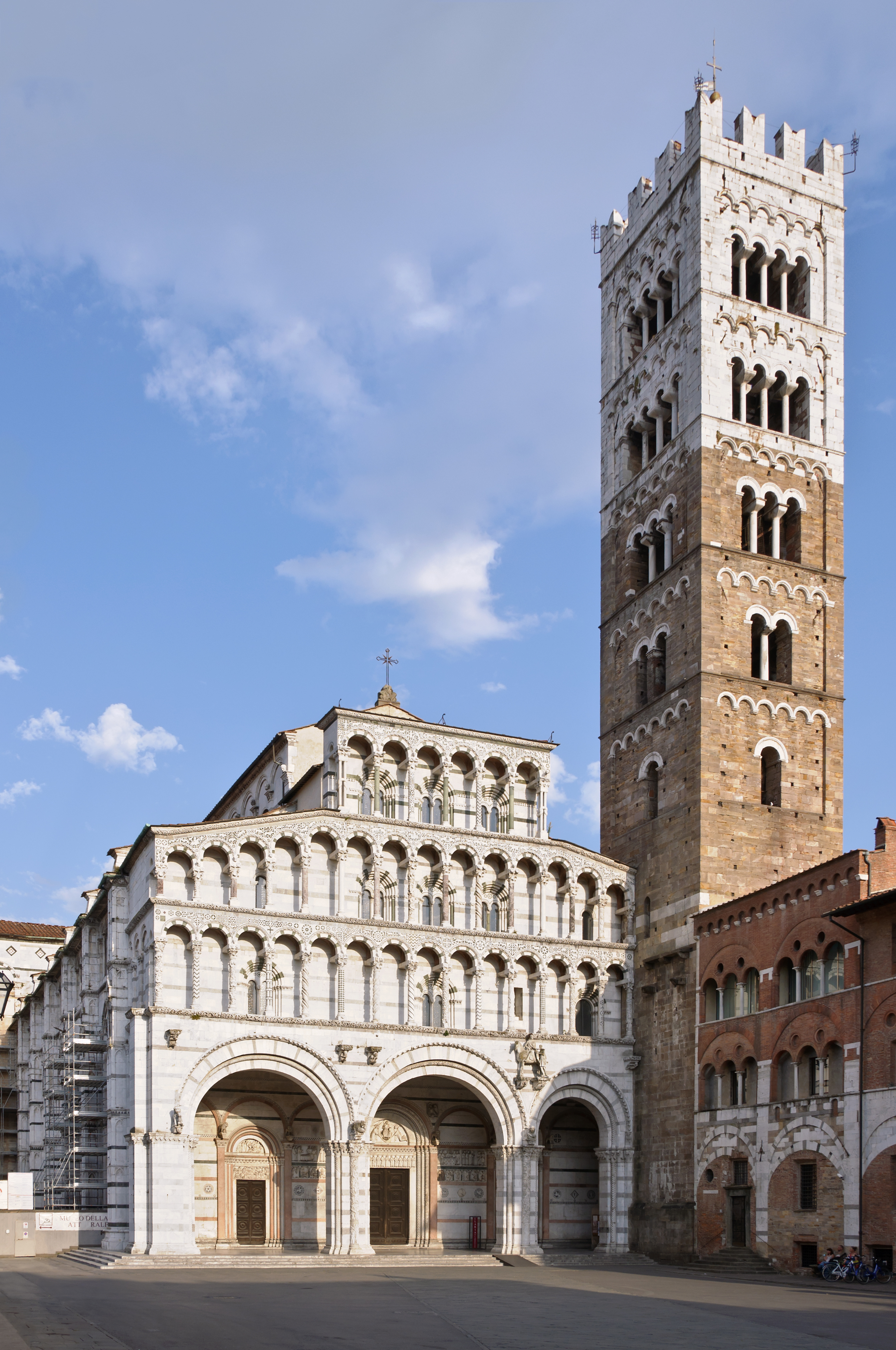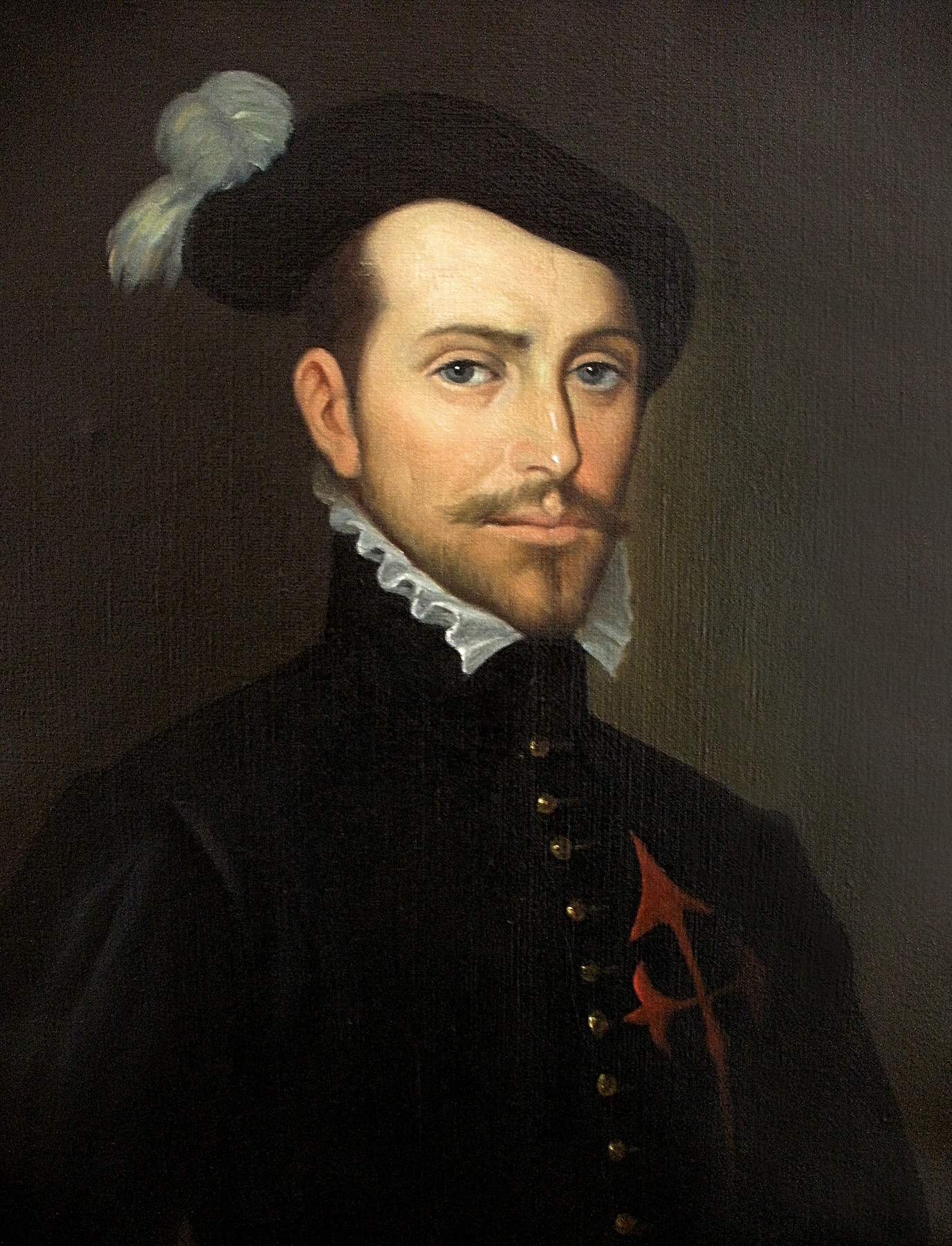|
Agostino Marti
Agostino Marti (1482 – after 1542/43) was an Italian painter. He flourished between 1520-1526. Biography Marti lived and worked primarily in the Province of Lucca. He specialized in oil on wood paintings of religious themes. Marti has a painting ''Saint John Writing the Gospel'' in Capannori's Parish of Saint Paul (Pieve San Paolo) church. His work ''Madonna and Child Enthroned with Saints'' was painted in 1513 on commission by the Signoria di Carrara Alberico Malaspina Regolo for the church of San Francesco in Massa, Tuscany, Massa. Marti has a street named after him Lucca#Main sights, Viale Agostino Marti in the commune of Lucca. References 1485 births 1537 deaths 15th-century Italian painters Italian male painters 16th-century Italian painters Artists from the Province of Lucca {{Italy-painter-15thC-stub ... [...More Info...] [...Related Items...] OR: [Wikipedia] [Google] [Baidu] |
Answers
Answer commonly refers to response to a question. Answer may also refer to: * Answer (law), any reply to a question, counter-statement or defense in a legal procedure Music * Answer, an element of a fugue Albums * ''Answer'' (Angela Aki album), 2009 * ''Answer'' (Supercar album), 2004 * ''Answers'' (album), 1994 * ''The Answers'', an album by Blue October Songs * "Answer" (Tohoshinki song) * "Answer" (Flow song), 2007 *"Answer", by Tyler, the Creator from the album ''Wolf'' *"Answer", by Sarah McLachlan from her 2003 album ''Afterglow'' *"Answer", by Mayu Maeshima, opening song from the 2021 anime ''Full Dive'' Publications * ''Answers'' (periodical), British weekly paper founded in 1888, initially titled ''Answers to Correspondents'' *''Answer'', a very short science-fiction story published in 1954 by Fredric Brown. *''Answers'', an American magazine published by Answers in Genesis * ''The Questionnaire'' (Salomon novel), also published as "The Answers" Groups, organiza ... [...More Info...] [...Related Items...] OR: [Wikipedia] [Google] [Baidu] |
Province Of Lucca
The province of Lucca ( it, provincia di Lucca) is a province in the Tuscany region of Italy. Its capital is the city of Lucca. It has an area of and a total population of about 390,000. There are 33 ''comuni'' (singular: ''comune'') in the province. Geography Situated in northwestern coastal Italy, within Tuscany, Lucca borders the Ligurian Sea to the west, the provinces of Massa e Carrara to the northwest, Pisa to the south, Pistoia to the north-east and Firenze to the east. To the north it abuts the region of Emilia-Romagna (Provinces of Reggio Emilia and Province of Modena). Access to the Ligurian Sea is through municipalities such as Torre del Lago, Viareggio, and Forte dei Marmi. It is divided into four areas; Piana di Lucca, Versilia, Media Valle del Serchio and Garfagnana. Versilia is known for its extensive beaches, and there are coastal dunes and wetlands in the Migliarino-San Rossore-Massaciuccoli Natural Park. The principal resorts of the province are located at Vi ... [...More Info...] [...Related Items...] OR: [Wikipedia] [Google] [Baidu] |
Capannori
Capannori () is an Italian town and ''comune'' in the province of Lucca, in northern Tuscany. History The 40 hamlets of Capannori are located on the lands that once corresponded to the eastern territories of the Republic of Lucca. Most of those hamlets date back to medieval times. Colognora di Compito was featured in the 2008 film ''Miracle at St. Anna''. Geography Overview Located in south of its province, next to the provinces of Pisa and Pistoia, the municipality borders with Altopascio, Bientina, Borgo a Mozzano, Buti, Calci, Lucca, Montecarlo, Pescia, Porcari, San Giuliano Terme, and Villa Basilica. Frazioni Capannori counts 40 hamlets (''frazioni''). The most populated village is not the town of Capannori, but the hamlet of Marlia (5,000 inhabitants). The hamlets of Capannori are: Badia di Cantignano, Camigliano, Carraia, Castelvecchio di Compito, Colle di Compito (the site of prisoner-of-war camp PG 60 during World War II), Colognora di Compito, Coselli, Gragnano, G ... [...More Info...] [...Related Items...] OR: [Wikipedia] [Google] [Baidu] |
Signoria Di Carrara
The Lordship of Carrara () was an Italian feudal state centered in Carrara, in what is now northern Tuscany. It was associated with the Lordships of Avenza and of the , and included Marina di Carrara, and the basin of the Carrione river. When emperor Henry VII suppressed the bishopric of Luni, once the main fief in the area, he assigned the territory of the former free commune of Carrara to his ally the Republic of Pisa in 1313. The lordship of Carrara was subsequently held by different families and at different cities, such as Lucca and the Visconti of Milan, and was finally sold to the marquis of Massa in 1473. Massa and Carrara were from then on ruled together, in a sort of personal union, until their merging into the Duchy of Modena and Reggio The Duchy of Modena and Reggio ( Emilian: ''Duchêt ed Mòdna e Rèz'', it, Ducato di Modena e Reggio, la, Ducatus Mutinae et Regii) was an Italian state created in 1452 located in Northwestern Italy, in the present day region of ... [...More Info...] [...Related Items...] OR: [Wikipedia] [Google] [Baidu] |
Massa, Tuscany
Massa (; ) is a town and ''comune'' in Tuscany, central Italy, the administrative centre of the province of Massa and Carrara. It is located in the Frigido River Valley, near the Alpi Apuane, from the Tyrrhenian Sea. History Massa is mentioned for the first time in the Tabula Peutingeriana, a 2nd-4th century AD itinerary, with the name ''ad Tabernas frigidas'', referring perhaps to a stage on the Via Aemilia Scauri consular road from Pisa to Luni, Italy, Luni. From the 15th to the 19th century, Massa was the capital of the independent Principate (later Duchy) of Duchy of Massa and Carrara, Massa and Carrara, ruled by the Malaspina family, Malaspina and Cybo-Malaspina families. Massa is the first recorded town in Europe in which the magnetic needle compass was used in mines to map them and determine the extent of various mine owners' properties. In 1829 the states were inherited by Francis IV, Duke of Modena. In 1859, during the unification of Italy process, it joined the King ... [...More Info...] [...Related Items...] OR: [Wikipedia] [Google] [Baidu] |
Lucca
Lucca ( , ) is a city and ''comune'' in Tuscany, Central Italy, on the Serchio River, in a fertile plain near the Ligurian Sea. The city has a population of about 89,000, while its province has a population of 383,957. Lucca is known as one of the Italian's "Città d'arte" (Arts town), thanks to its intact Renaissance-era city walls and its very well preserved historic center, where, among other buildings and monuments, are located the Piazza dell'Anfiteatro, which has its origins in the second half of the 1st century A.D. and the Guinigi Tower, a tower that dates from the 1300s. The city is also the birthplace of numerous world-class composers, including Giacomo Puccini, Alfredo Catalani, and Luigi Boccherini. Toponymy By the Romans, Lucca was known as ''Luca''. From more recent and concrete toponymic studies, the name Lucca has references that lead to "sacred wood" (Latin: ''lucus''), "to cut" (Latin: ''lucare'') and "luminous space" (''leuk'', a term used by the firs ... [...More Info...] [...Related Items...] OR: [Wikipedia] [Google] [Baidu] |
1485 Births
Year 1485 ( MCDLXXXV) was a common year starting on Saturday (link will display the full calendar) of the Julian calendar. Events January–December * Spring – Multiple earthquakes occur near Taishan, China. * March 16 – A solar eclipse crosses northern South America and Central Europe. * June 1 – Matthias of Hungary takes Vienna, in his conquest of Austria (from Frederick III), and makes the city his capital. * August 5–August 7 – The first outbreak of sweating sickness in England begins. * August 22 – Battle of Bosworth: King Richard III of England is defeated by (rival claimant to the throne of England) Henry Tudor, Earl of Richmond; Richard dies in battle, and Henry Tudor becomes King Henry VII of England (although Henry marks this battle as August 21, so that he can declare all his opponents traitors). * September 12 – Muscovian forces conquer Tver. * September 15 – Peter Arbues is assaulted while praying in the ca ... [...More Info...] [...Related Items...] OR: [Wikipedia] [Google] [Baidu] |
1537 Deaths
__NOTOC__ Year 1537 ( MDXXXVII) was a common year starting on Monday (link will display the full calendar) of the Julian calendar. Events January–June * January ** Bigod's Rebellion, an uprising by Roman Catholics against Henry VIII of England, is crushed. ** Battle of Ollantaytambo: Emperor Manco Inca Yupanqui is victorious against the Spanish and their Indian allies led by Hernando Pizarro. * March – Diego de Almagro successfully charges Manco Inca's siege of Cuzco, thereby saving his antagonists, the Pizarro brothers. * March 12 – Recife is founded by the Portuguese, in Brazil. * April – Spanish conquest of the Muisca: Bacatá, the main settlement of the Muisca Confederation, is conquered by Gonzalo Jiménez de Quesada, effectively ending the Confederation in the Colombian Eastern Andes. * April 1 – The Archbishop of Norway Olav Engelbrektsson flees from Trondheim to Lier, Belgium. * June 2 – Pope Paul III publishes the en ... [...More Info...] [...Related Items...] OR: [Wikipedia] [Google] [Baidu] |
15th-century Italian Painters
The 15th century was the century which spans the Julian dates from 1 January 1401 ( MCDI) to 31 December 1500 ( MD). In Europe, the 15th century includes parts of the Late Middle Ages, the Early Renaissance, and the early modern period. Many technological, social and cultural developments of the 15th century can in retrospect be seen as heralding the "European miracle" of the following centuries. The architectural perspective, and the modern fields which are known today as banking and accounting were founded in Italy. The Hundred Years' War ended with a decisive French victory over the English in the Battle of Castillon. Financial troubles in England following the conflict resulted in the Wars of the Roses, a series of dynastic wars for the throne of England. The conflicts ended with the defeat of Richard III by Henry VII at the Battle of Bosworth Field, establishing the Tudor dynasty in the later part of the century. Constantinople, known as the capital of the world ... [...More Info...] [...Related Items...] OR: [Wikipedia] [Google] [Baidu] |
Italian Male Painters
Italian(s) may refer to: * Anything of, from, or related to the people of Italy over the centuries ** Italians, an ethnic group or simply a citizen of the Italian Republic or Italian Kingdom ** Italian language, a Romance language *** Regional Italian, regional variants of the Italian language ** Languages of Italy, languages and dialects spoken in Italy ** Italian culture, cultural features of Italy ** Italian cuisine, traditional foods ** Folklore of Italy, the folklore and urban legends of Italy ** Mythology of Italy, traditional religion and beliefs Other uses * Italian dressing, a vinaigrette-type salad dressing or marinade * Italian or Italian-A, alternative names for the Ping-Pong virus, an extinct computer virus See also * * * Italia (other) * Italic (other) * Italo (other) * The Italian (other) * Italian people (other) Italian people may refer to: * in terms of ethnicity: all ethnic Italians, in and outside of Italy * ... [...More Info...] [...Related Items...] OR: [Wikipedia] [Google] [Baidu] |
16th-century Italian Painters
The 16th century begins with the Julian year 1501 ( MDI) and ends with either the Julian or the Gregorian year 1600 ( MDC) (depending on the reckoning used; the Gregorian calendar introduced a lapse of 10 days in October 1582). The 16th century is regarded by historians as the century which saw the rise of Western civilization and the Islamic gunpowder empires. The Renaissance in Italy and Europe saw the emergence of important artists, authors and scientists, and led to the foundation of important subjects which include accounting and political science. Copernicus proposed the heliocentric universe, which was met with strong resistance, and Tycho Brahe refuted the theory of celestial spheres through observational measurement of the 1572 appearance of a Milky Way supernova. These events directly challenged the long-held notion of an immutable universe supported by Ptolemy and Aristotle, and led to major revolutions in astronomy and science. Galileo Galilei became a champion o ... [...More Info...] [...Related Items...] OR: [Wikipedia] [Google] [Baidu] |




